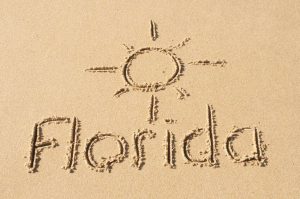2 4: Assigning Manufacturing Overhead Costs to Jobs Business LibreTexts

For example, let’s say the marketing agency quotes a client $1,000 for a project that will take 10 hours of work. The agency knows from its predetermined overhead rate that it will incur $200 in overhead costs for the project. If the job in work in process has recorded actual material costs of 4,640 for the accounting period then the predetermined overhead applied to the job is calculated as follows. The overhead cost per unit from Figure 6.4 is combined with the direct material and direct labor costs as shown in Figure 6.3 to compute the total cost per unit as shown in Figure 6.5.

Why Do We Need to Calculate Predetermined Overhead Rate?
The activity base for applying manufacturing overhead is normally a unit quantity which relates to the manufacturing process such as the following. When making pricing decisions about a product, the management of a business must first understand what the costs of the product are. If the management does not consider the cost of the product when setting its price, then the price of the product may end up being too unrealistic. However, if the business sets the price of the same product as $1, without considering its cost, then the business will make huge losses on the product. Unexpected expenses can be a result of a big difference between actual and estimated overheads.
AccountingTools

Here’s how a service-based business, namely a marketing agency, might go about calculating its predetermined overhead rate. Once you have a handle on your estimated overhead costs, you can https://www.bookstime.com/ plug these numbers into the formula. The predetermined rate is based on estimates before the accounting period begins and is held constant throughout the period.

Chapter 2: Job Order Cost System
- The allocation of overhead to the cost of the product is also recognized in a systematic and rational manner.
- Then, they’ll need to estimate the amount of activity or work that will be performed in that same time period.
- A predetermined overhead rate (pohr) is use to calculate the amount of manufacturing overhead which is to be applied to the cost of a product.
- But determining the exact overhead costs is not easy, as the cost of electricity needed to dry, crush, and roast the nuts changes depending on the moisture content of the nuts upon arrival.
- Therefore, the single rate overhead recovery rate is considered inappropriate, but sometimes it can give maximum correct results.
- A later analysis reveals that the actual amount that should have been assigned to inventory is $48,000, so the $2,000 difference is charged to the cost of goods sold.
- In a company, the management wants to calculate the predetermined overhead to set aside some amount for the allocation of a cost unit.
In more complicated cases, a combination of several cost drivers may be used to approximate overhead costs. For example, the recipe for shea butter has easily identifiable quantities of shea nuts and other ingredients. Based on the manufacturing process, it is also easy to determine the direct labor cost.

JKL allocates the manufacturing overhead based on the normal and expected number of production machine hours which are 20,000 for the new year. Therefore, the JKL’s predetermined manufacturing overhead rate for the new year will be $60 ($1,200,000/20,000) per production machine hour. Sales of each product have been strong, and the total gross profit for each product is shown in Figure 6.7.
- Once both these estimates have been made, the business can calculate its predetermined overhead rate.
- Predetermining is a process of working out the predetermined overhead rate by dividing the estimated amount of overhead by the estimated value of the base before actual production commences.
- The overhead rate has limitations when applying it to companies that have few overhead costs or when their costs are mostly tied to production.
- (c) Last but not least, we normally use a rate per unit to calculate the predetermined overhead rate when all units are identical.
- If the amount is material, it should be closed to three different accounts—work-in-process (WIP) inventory, finished goods inventory, and cost of goods sold—in proportion to the account balances in these accounts.
- •A company usually does not incur overhead costs uniformly throughout the year.
If the business absorbs lower overheads as compared to actual overheads, then it is considered as under absorption and considered a loss for the business. In either case, the difference between absorbed overheads and actual overheads is adjusted in profits or losses of the business. Using the planned annual amounts for the upcoming year reduces the fluctuations that would occur if monthly rates were used. The predetermined overhead rate is used to price new products and to calculate variances in overhead https://x.com/BooksTimeInc costs. Other examples of actual manufacturing overhead costs include factory utilities, machine maintenance, and factory supervisor salaries.
- This predetermined overhead rate can be used to help the marketing agency price its services.
- A large company with a corporate office, a benefits department, and a human resources division will have a higher overhead rate than a company that’s far smaller and with fewer indirect costs.
- These rates can be calculated using predetermine overhead formula by using estimated manufacturing overheads and estimated units of production or other valid basis.
- If a company prices its products so low that revenues do not cover its overhead costs, the business will be unprofitable.
- Predetermined overheads rate is the ratio of estimated overhead cost to the estimated units to be allocated and is used for allocation of expenses across its cost centers and can be fixed, variable or semi-variable.
- Once a company has determined the overhead, it must establish how to allocate the cost.
Ask Any Financial Question
Small companies tend to use activity-based costing, predetermined factory overhead rate whereas in larger companies, each department in which different processes of production take place typically computes its own predetermined overhead rate. The most important step in calculating your predetermined overhead rate is to accurately estimate your overhead costs. This means that for every dollar of direct labor costs, the business will incur $0.20 in overhead costs. Predetermined overhead rates are important because they provide a way to allocate overhead costs to products or services. In this article, we will cover how to calculate the predetermined overhead rate.
Leave a Reply